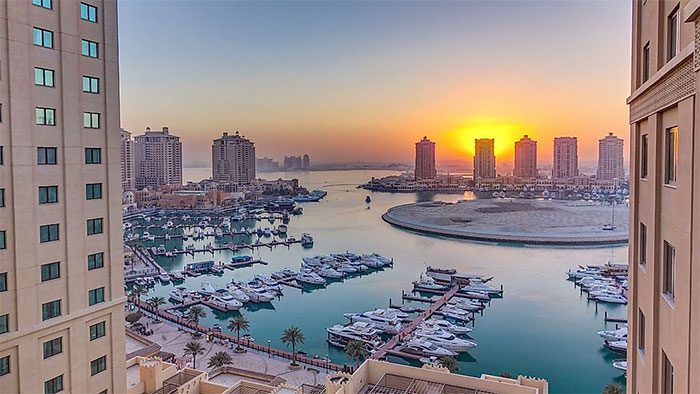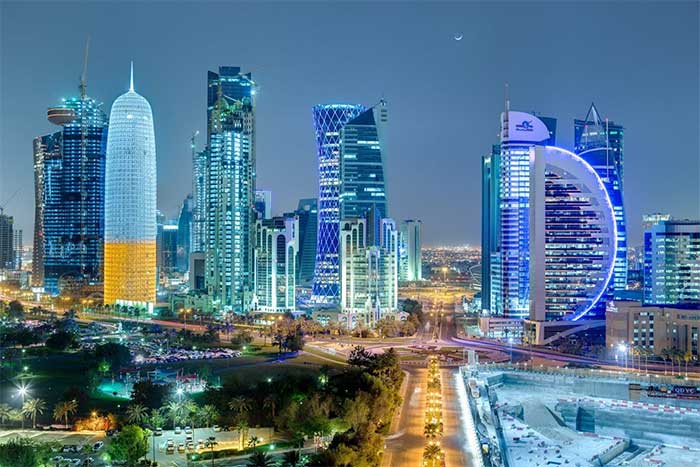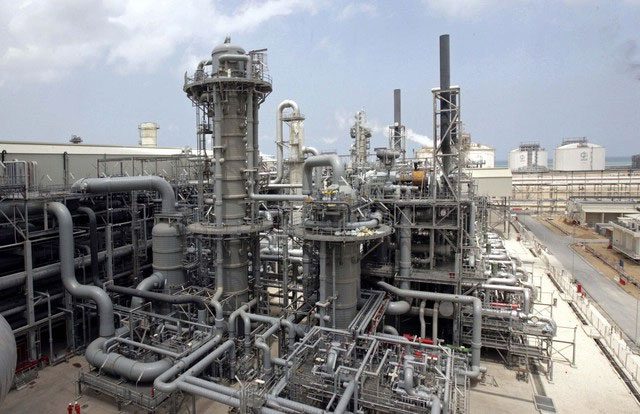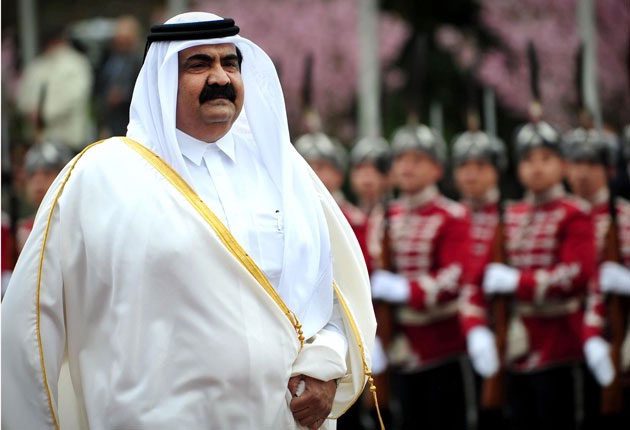In just 30 years, Qatar has transformed from a “fishing village” into an extraordinarily wealthy kingdom.
Qatar is currently under the global spotlight as it is the host of the World Cup 2022. Prior to this, the name Qatar was not particularly familiar to most people. Our perception of Qatar often includes: located in the Middle East, small in size, and wealthy. But did you know that Qatar is not just wealthy, but ranks among the richest in the world?


Qatar is currently one of the wealthiest and most prosperous economies in the Middle East
For many years, Qatar has consistently ranked in the top 5 of the world’s richest countries based on GDP per capita, and has often held the number one spot. Qatar is wealthier than the UAE, a country often seen as a symbol of prosperity.

GDP growth chart of Qatar. (Source: FRED)
However, just a few decades ago, Qatar was a barren land. The country gained independence from the United Kingdom in 1971. At that time, it was one of the poorest economies in the Middle East, primarily relying on the fishing industry. Qatar’s GDP per capita rose from $2,755 (approximately 68 million VND) in 1970 to a staggering $61,276 (around 1.5 billion VND) in 2021. The total domestic wealth of this nation, with nearly 3 million citizens, is $179.6 billion.
Over the past three decades, Qatar has rapidly transformed into one of the richest economies in the world. Most people believe that their economic success is due to the discovery of oil and natural gas. Although oil and gas have indeed played a crucial role in making Qatar a powerful economy, having natural resources does not automatically guarantee wealth. For example, look at Venezuela or North Korea.
So how did this small nation, smaller than the state of California, manage to become a global economic powerhouse? The answer is not overly complex: Qatar is not only blessed with abundant natural resources but, more importantly, they know how to use them effectively.
Why have gas reserves always been there, yet Qatar only recently experienced significant growth?
The first oil fields were discovered in Qatar in the 1940s. However, this did not make Qatar a wealthy nation. It was not until the 1970s that the country’s greatest asset was found—the largest gas field in the world, located in the north. At that time, the demand for natural gas was low as it could only be transported through pipelines. Qatar was also far from areas with a demand for natural gas, which posed a significant problem. Thus, they soon forgot about their massive gas reserves.
In 1996, Emir Hamad bin Khalifa al Thani began to exploit the large gas fields. The Emir invested in rare technologies like liquefaction to transport natural gas in liquid form, enabling it to be shipped by large vessels like oil. Even when Qatar was still a poor country, it took a significant risk to invest heavily in developing these technologies to increase their gas demand from distant economies.

When faced with the challenge of transporting gas, the Qataris solved the issue by liquefying it for sale.
This effort has certainly paid off. Today, Qatar has the lowest extraction and liquefaction costs for oil in the world, allowing them to earn profits even at low prices. Most of the kingdom’s natural gas is exported to Asian economies like Japan, South Korea, and China.
Saving More Than Spending
Having large oil and gas reserves does not guarantee a wealthy economy. Qatar understood that oil revenue is highly volatile; therefore, they began saving the money earned from minerals and investing it globally.

Emir Hamad bin Khalifa Al Thani.
The Qatar Investment Authority is a government-established fund created in 2005. As a sovereign wealth fund, it invests the revenue received from oil to help make the economy more sustainable and reduce long-term dependence on oil. As of 2022, the Qatar Investment Authority is valued at a staggering $360 billion. It has “spread its money” globally, investing in various assets such as real estate, public companies, and currencies.
Qatar was the first Middle Eastern economy to host the FIFA World Cup in 2022, showcasing Qatar’s strength and wealth.





















































